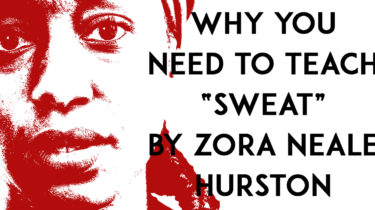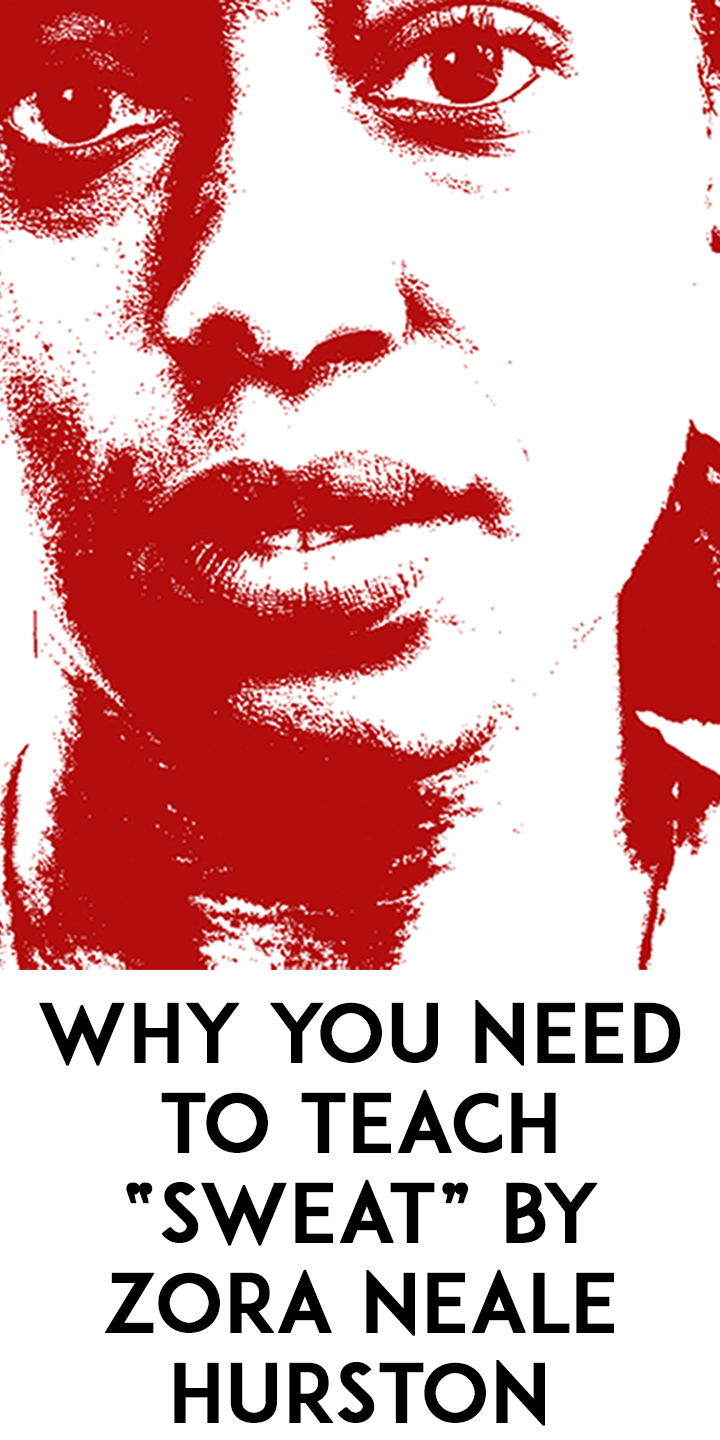Why You Need to Teach “Sweat” by Zora Neale Hurston

I’m always on the lookout for a great new text that will impact my students and also be enjoyable to teach. And when I do find that gem that has for some reason been hidden from me, I want other high school teachers to experience it as well. I can get kind of excited about new discoveries, especially when they add diverse voices and views to my curriculum. I created this unit on “Sweat” and now I want everyone to experience Hurston’s classic short story.
So, if you’re not already teaching “Sweat,” here’s where I convince you why you need to add it to your plans.
Everyone loves a good comeuppance. The main characters in the story are Delia and her husband Sykes. After a long history of abusing his wife, Sykes finally gets what’s coming to him when he is killed by the rattle snake that he brings into the house specifically because his wife is terrified of it. As Delia thinks, “whatever goes over the devil’s back, is got to come under his belly. Sometime or ruther, Sykes, like everybody else, is gointer reap his sowing.” Delia is such a good person—hard working, faithful, humble—and Sykes is such an awful character—cruel, ignorant, arrogant, and lazy—that his death is quite satisfying for the reader. This is the hook that keeps us going and makes the story so compelling to read. But besides the engaging plot, there is so much more to explore.
Hurston’ figurative language is both masterful and lots of fun.With lines ranging from clever insults like “She don’t look lak a thing but a hunk uh liver wid hair on it” to meaning-rich similes such as “Delia’s habitual meekness seemed to slip from her shoulders like a blown scarf,” Hurston fully utilizes figurative language to create pleasure for the reader as well as meaning throughout the story. Spending time analyzing and discussing her techniques is so worth the time.
Anthropology is fascinating. Hurston did some amazing anthropological research in Florida during the Great Depression. Employed by the Federal Writer’s Project, she went out into small towns in Florida to interview people about their lives and to learn their songs and stories. Since her fictional writing is so lyrical and musical and so much depends on “hearing” the voices of the characters, it’s key for students to actually listen to some of the music that influenced Hurston’s prose. Spending some time listening to and discussing the songs that Hurston learned during those outings makes the experience of the story so much richer and opens up a new world for students.
African American Spirituals are wonderful to hear, and they have a powerful, complex history. Throughout the story, Delia sings or hums African American spirituals, and she gains a great deal of comfort from the mournful songs about escape, freedom, and redemption from suffering. Spending some time listening to and analyzing the lyrics of spirituals enriches the experience and makes this story even more enjoyable. My favorites are “Swing Low, Sweet Chariot” and “Trouble the Waters,” and there are some great recordings available online.
Hurston’s use of biblical and literary allusions is complex and interesting. Like many other writers, Hurston utilizes biblical allusions in her story. From the snake to Gethsemane to the river Jordan, there is a great deal to unpack in this seemingly straightforward story. However, what is important for students to understand is that an allusion is not just a way to add something fancy to a text or a way for an author to show off their knowledge of the Bible. Hurston takes these famous stories and she makes them her own, esteeming some traditions and values while questioning others.
Things are not always what they seem. Just when students think they have it all figured out, it’s so much fun to get them thinking about the other side of the issue. “Sweat” seems straightforward at first, but once students start exploring the bigger questions and paying attention to some of the smaller details, they start to realize that things aren’t always what they seem. And these days especially, it’s important to teach students to ask questions, analyze thoroughly, and always try to find the more nuanced version of the truth.
We all suffer, and we all can fight against oppression and grow from our pain. My ultimate goal with anything I have my students read is for them to come to a greater understanding of their own lives and capabilities. The themes of suffering, oppression, and rebirth from pain in Hurston’s classic story are so valuable for students, most of whom have already gone through plenty in their short lives. What they will learn when they read this story is that if the most humble, uneducated washerwoman can take back her life, we can too, and we should all fight back against injustice in our own lives and the lives of others.
Want to teach Hurston’s powerful short story with a unit that will do it justice? Click here to get my three-day unit on “Sweat.”
